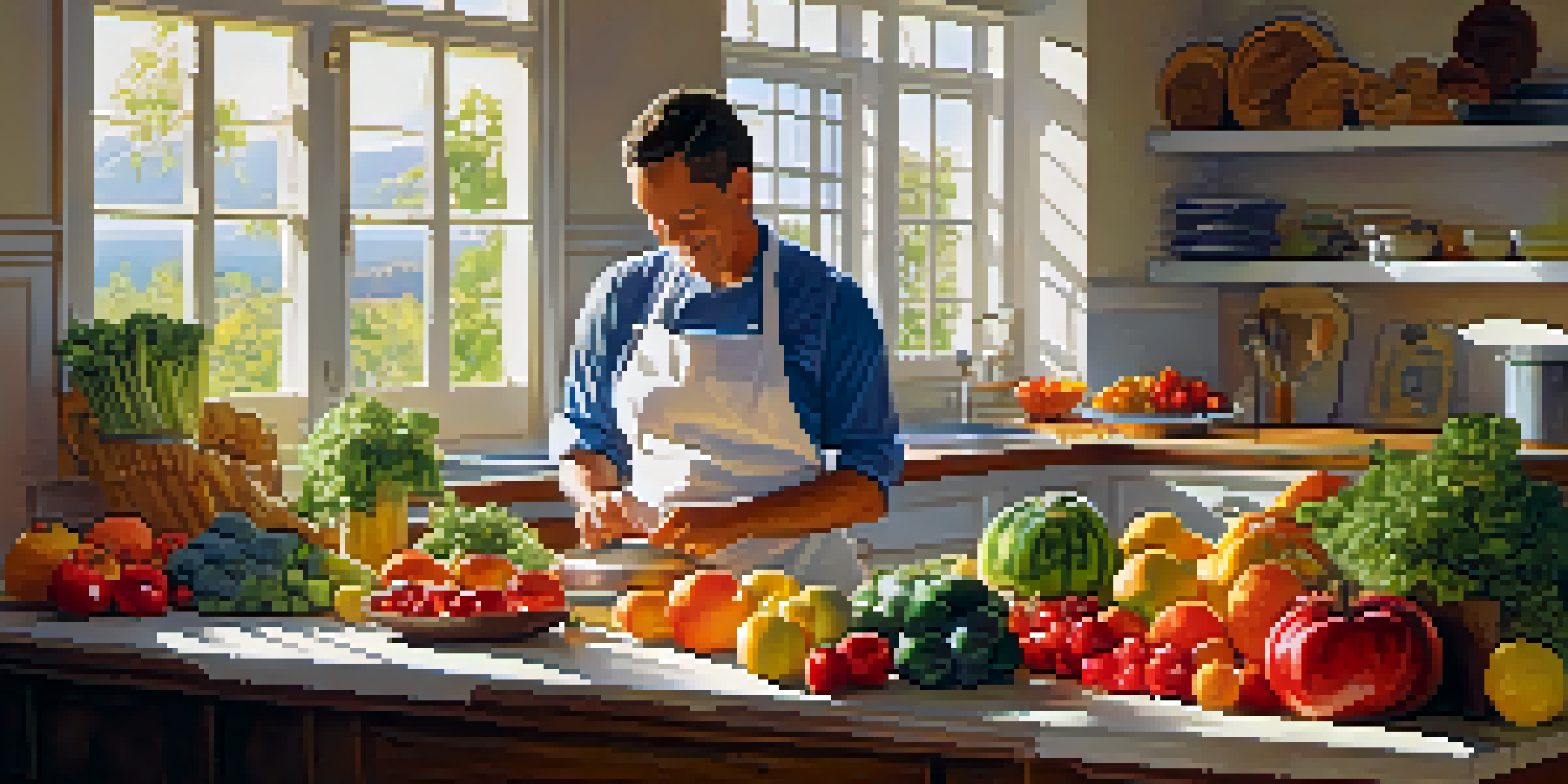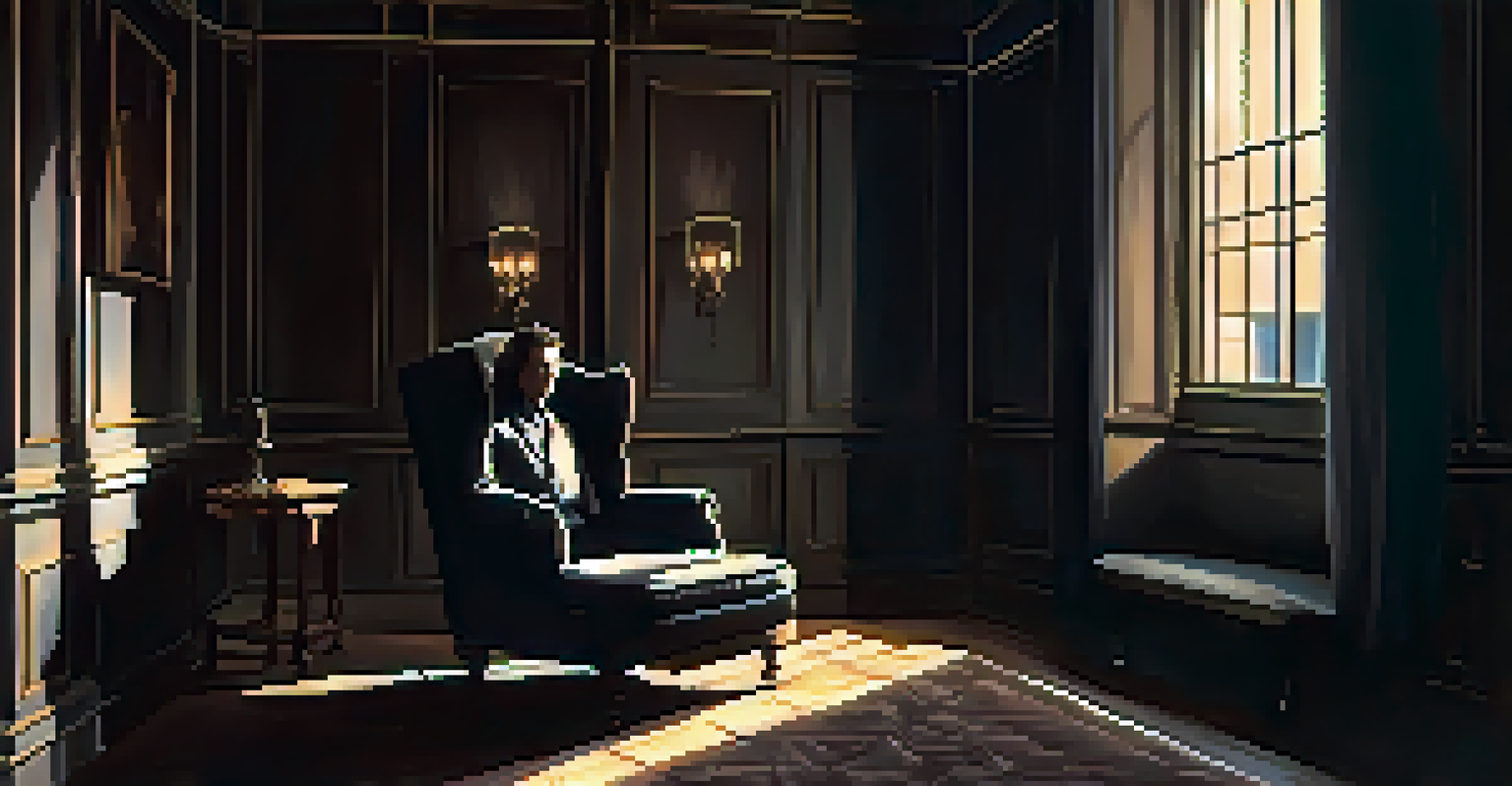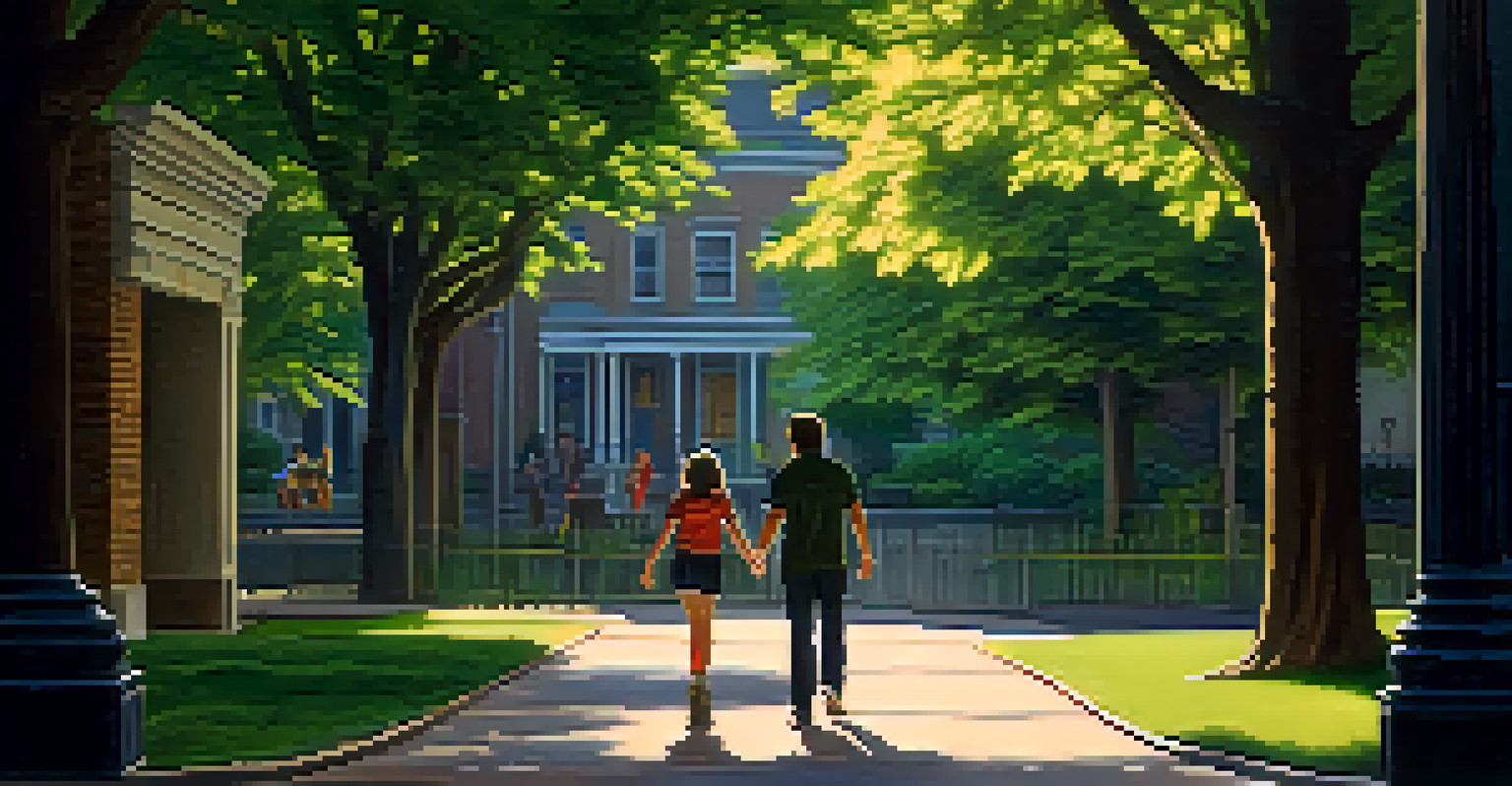High Key vs Low Key Lighting: Defining Film Mood

Understanding High Key Lighting and Its Impact
High key lighting is characterized by bright, even illumination, minimizing shadows and creating a vibrant atmosphere. This style is often utilized in comedies and light-hearted narratives, where the goal is to evoke feelings of joy and optimism. For instance, many romantic comedies use high key lighting to heighten the sense of happiness and connection between characters, making the scenes feel more inviting.
Lighting is the essence of filmmaking, without it, there would be no atmosphere, no mood, and no story.
The technique involves using multiple light sources to ensure that the subject is well-lit from various angles. This approach not only enhances visibility but also adds a polished, professional look to the scene. Think of it like a sunny day that brings everything to life, making even the simplest moment seem enchanting.
While high key lighting can create a warm and cheerful mood, it can also risk feeling artificial if overused. Striking a balance is key; too much brightness can lead to a lack of depth or emotion. Therefore, filmmakers often blend high key lighting with other techniques to maintain an engaging visual storytelling experience.
Exploring Low Key Lighting and Its Emotional Depth
Low key lighting, on the other hand, is synonymous with drama and tension. This technique involves using strong contrasts between light and shadow, creating a moody and mysterious atmosphere. It's commonly found in film noir and thrillers, where suspense is essential to the story's impact.

By strategically placing a single light source and allowing shadows to dominate, filmmakers can evoke feelings of unease or intrigue. Imagine stepping into a dimly lit room where shadows dance on the walls; it immediately sets a tone of uncertainty and anticipation. This is the power of low key lighting—it draws viewers in and keeps them on the edge of their seats.
High Key Lighting Evokes Joy
High key lighting creates a bright and cheerful atmosphere, making it ideal for comedies and light-hearted narratives.
Moreover, low key lighting can also highlight specific details, guiding the audience's focus toward crucial elements in a scene. This technique serves as a visual cue, emphasizing emotions or actions that are pivotal to the plot. Utilizing low key lighting effectively can transform a simple scene into a compelling narrative moment.
The Role of Lighting in Film Mood and Atmosphere
Lighting is a vital tool in filmmaking, as it not only illuminates scenes but also shapes the emotional landscape. The choice between high key and low key lighting can drastically alter how viewers perceive a story. A well-lit scene can evoke joy, while shadows can stir feelings of fear or curiosity.
The best lighting is the light that makes the story come alive.
Filmmakers often use lighting to reflect character emotions and dynamics. For instance, a character in a high key lit scene may appear more approachable and friendly, while the same character in low key lighting might come across as ominous or conflicted. This visual storytelling element allows filmmakers to craft rich narratives that resonate deeply with audiences.
Furthermore, the interplay between high and low key lighting can create visual contrast that enhances storytelling. By alternating between these styles, filmmakers can emphasize shifts in tone or character development, making the narrative more engaging. This dynamic approach keeps viewers invested in the film's emotional journey.
Practical Applications of High Key and Low Key Lighting
In practical terms, high key lighting is often used in commercials and television shows that aim for a bright, upbeat feel. For example, a cooking show might employ high key lighting to showcase colorful ingredients, making them more appetizing and appealing to viewers. This application highlights the importance of lighting in influencing audience perception.
Conversely, low key lighting is frequently utilized in horror films, where creating an unsettling atmosphere is paramount. Scenes shrouded in darkness, punctuated by harsh light, can elevate tension and fear, leading to a more impactful viewing experience. The right lighting can turn an ordinary scene into a chilling moment that lingers with the audience long after the credits roll.
Low Key Lighting Creates Tension
Low key lighting uses strong contrasts to cultivate a moody and suspenseful environment, often found in thrillers and film noir.
Both lighting styles can also be adapted for different genres, offering filmmakers versatility in their storytelling. By understanding the emotional cues that high key and low key lighting provide, filmmakers can choose the best approach to enhance their narrative effectively. This adaptability is key to creating memorable cinematic experiences.
Key Differences Between High Key and Low Key Lighting
The primary difference between high key and low key lighting lies in their visual tone. High key lighting is bright and evenly distributed, while low key lighting is characterized by stark contrasts and deep shadows. This fundamental distinction affects not just the aesthetic but also the emotional weight of a scene.
High key lighting fosters a sense of openness and warmth, often leading to feelings of happiness or safety. In contrast, low key lighting introduces an element of mystery or danger, making it perfect for scenes that require heightened tension. Understanding these differences allows filmmakers to select the appropriate lighting style that aligns with their story's mood.
Additionally, the context and genre of the film will often dictate which lighting style is more suitable. A light-hearted romantic film would typically lean toward high key lighting, while a psychological thriller would embrace low key techniques. This conscious decision-making process is essential for effective visual storytelling.
Combining High Key and Low Key Lighting for Impact
Using both high key and low key lighting within the same film can create a powerful juxtaposition that enhances storytelling. By alternating between these styles, filmmakers can guide viewers through emotional highs and lows, making the narrative more engaging. This technique can be particularly effective during pivotal plot moments where character emotions shift dramatically.
For example, a scene may begin with high key lighting to establish a joyful reunion, only to transition to low key lighting as tension builds. This shift not only reflects the characters' emotional journey but also keeps the audience invested in the unfolding drama. The contrast between the two styles can serve as a visual metaphor for the complexities of the human experience.
Lighting Shapes Emotional Experience
The choice between high key and low key lighting significantly influences how audiences perceive a film's mood and character emotions.
Furthermore, blending these lighting styles can help emphasize character development. A character who starts in a carefree, well-lit environment may gradually face darker challenges, reflected by a shift to low key lighting. This visual storytelling tool deepens the audience's connection to the characters and their journeys.
Conclusion: The Power of Lighting in Film
In conclusion, the choice between high key and low key lighting is more than just a technical decision; it’s a crucial aspect of storytelling that shapes the viewer's emotional experience. Each style brings its own unique qualities, influencing how audiences interpret scenes and connect with characters. Understanding the nuances of these lighting techniques can empower filmmakers to craft more compelling narratives.
As we’ve explored, high key lighting cultivates warmth and positivity, while low key lighting invites intrigue and tension. By mastering these styles, filmmakers can create a rich tapestry of moods that resonate deeply with their audience. The interplay between light and shadow is a dynamic tool in the art of filmmaking.

Ultimately, whether a film leans toward high key, low key, or a blend of both, the goal remains the same: to tell a story that captivates and evokes emotion. Through thoughtful lighting choices, filmmakers can elevate their storytelling, making the cinematic experience unforgettable.